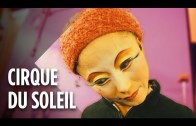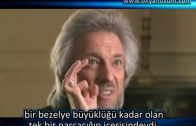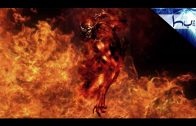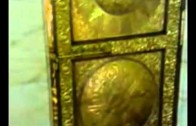Watch the next video to learn more about Obama’s speech writer: https://www.youtube.com/watch?v=tjKXONnxYpo&list=UUJsSEDFFnMFvW9JWU6XUn0Q&index=3
Subscribe! https://www.youtube.com/c/seekerstories?sub_confirmation=1
Join the Seeker community!
Twitter: https://twitter.com/SeekerNetwork
Facebook: https://www.facebook.com/pages/Seeker-Network/872690716088418?ref=hl
Instagram: http://instagram.com/seekernetwork
Tumblr: http://seekernetwork.tumblr.com
App — iOS http://seekernetwork.com/ios
App — Android http://seekernetwork.com/android
Since it was founded in 1984, Cirque du Soleil has created a vast number of dynamic and jaw-dropping shows that redefine the modern circus. One of the entertainment company’s most formidable shows is KÀ, which has been running since 2004 at the MGM Grand in Las Vegas, Nevada.
Cirque du Soleil recruits top artists from around the world to audition and perform in their shows. Artists compete for highly coveted positions and for many, it is their dream to be on the stage in a Cirque du Soleil production.
For a production of KÀ, there are 14 acts, 80 artists, and over 300 people working behind the scenes. The Los Angeles Times called it the most technologically advanced show in Western theater, incorporating hydraulics, moving stages, pyrotechnics, and more. Seeker Stories correspondent Laura Ling went backstage to interview five artists from the cast. What kind of rituals did each artist use to prepare and remain focused for such advanced, breath-taking stunts?
All of the artists have their own way of preparing mentally, physically, and emotionally to go on stage. For artist Noriko Takahashi, who uses a baton in may of her scenes, practice is essential – even after performing in the show for 11 years. “If I can trust myself,” she explains, “I feel more free on the stage. It makes my performance better.”
For other performers, it is important to connect the mind with the body through various exercises. “I do skipping rope and I do all sorts of juggling,” said capoeira artist Gabryel Nogueira da Silva. With as complex of a production as KÀ, it’s also important to connect with other members of the cast. “When there’s other people warming up in the same room as me, I try to play with them. I think that’s my main goal of the ritual. It is to be connected to the other people that are around me so we can deliver the final result together.”
One of the audience’s favorite acts, which features the Wheel of Death, takes immense preparation and focus for it’s star performers, the Alegría brothers, Francisco and Sabu.
“My brother and I, we are not attached to any safety because you have to be free to be able to really perform. Anything can happen in blink of an eye,” said Francisco. So the brothers often play football, or soccer, with each other and other cast members in order to get their adrenaline running. “Every movement is like the wheel,” said Sabu. “You run and sometimes, you need to react quickly.”
Dan Hong Li, a Chinese opera artist, approaches her warm-up very differently. For her, the important goal is to become calm and focused. Her main ritual involves breathing exercises in the training room before a performance. “Tai Chi gives me a clear mind and positive energy,” she explained. Entering into character is also an important step. “When I do my makeup, I just totally, completely relax and focus. I think it’s very important.”
The cast of KÀ perform the show ten times a week, and even on their days off, they spend many hours conditioning their bodies, eating a focused diet, and concentrating on their routine. It is a lot of hard work, which some of the performers have been doing all of their lives.
Francisco and Sabu Alegría have been in the business for nearly 30 years, and know that staying on top of their craft and remaining dedicated to their work is paramount to safety. “When you want to do something, you have to take it seriously. If you really want to learn,” said Francisco, “You have to be disciplined.”














